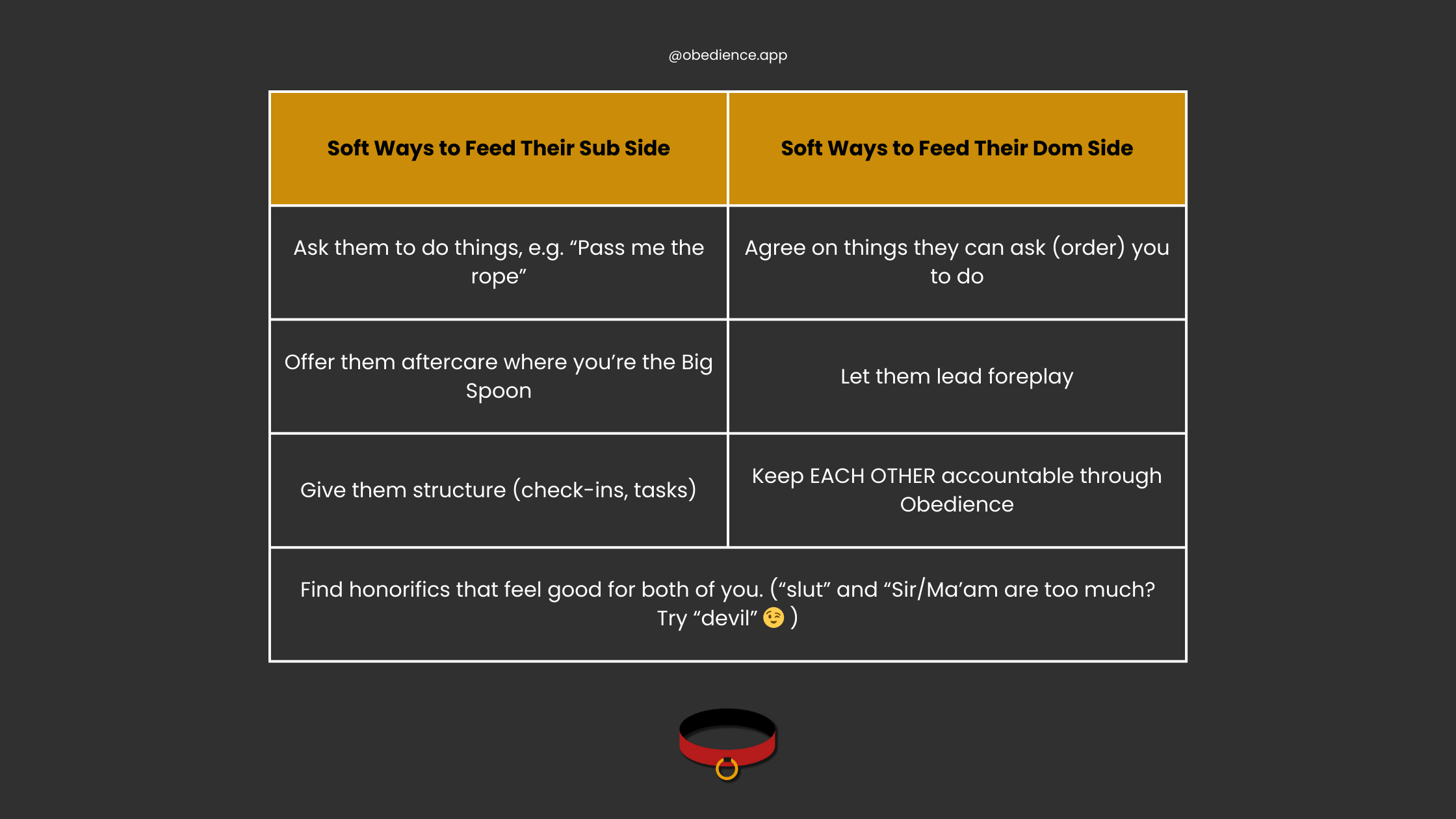Switches in BDSM: Understanding Headspace, Role Balance, and Drop
written by Micah Brown
We have talked at length about the types of headspace and forms of drop that are associated with Dominants and Submissives, but we haven’t touched on how to approach these topics when it comes to somebody who identifies as a switch.
What is a Switch?
A switch in the world of BDSM is somebody who can be either a Dominant or a submissive, depending on their mood, partner, or what a scene calls for. They can turn on and turn off the parts of their psyche that associate with either the Dom or sub to meet the needs that are presented to them.
Some switches will Top or Dom for some partners and bottom or submit for other partners, while other switches may be with a partner who is also a switch and they will, ahem, switch roles. While a switch generally decides upon the role they will take before a scene, they could go from one side of the slash to the other within the course of the scene. Think about a kidnapping scene where the sub is kidnapped and is at the mercy of the Dom for part of the scene before escaping their bonds and turning the tables, where the kidnapper then becomes the bottom (or sub - depending on the scene itself) and the kidnapped is now in charge of the scene.
A switch will likely tell you, the same way a bisexual might, that being a switch means they get the best of both worlds.
How a Switch Enters Submissive Headspace
When a switch chooses to be a submissive, they could be making that decision for a specific partner or for a specific scene. For a switch who tends toward a more submissive nature, they may call themselves a submissive-leaning switch. This means that while they may Dom occasionally, their comfort level is more in line with being submissive. This can range from being mildly submissive to being a fully owned slave with a long-term partner while also having other partners that may submit to them.
A switch who goes into subspace isn’t going to behave any differently than somebody who identifies wholly as a submissive and never goes into Domspace. A switch will simply turn off their Dom side when they’re submitting and allow themselves to fall entirely into the realm of being a submissive. When they enter subspace, there isn’t a sense that they’re missing out on some part of themselves because the Dominant side of themselves isn’t being fed in that moment, instead they allow the full encapsulation of subspace to overtake them so that they can be the best submissive for their partner in that moment.
How a Switch Experiences Dominant Headspace
This would be the opposite side of the same coin. In this instance, when they decide to take on a Dominant role, it could once again be based on the partner they’re with or the scene they’ve decided to take part in. In most cases (see the kidnapping example above for an exception), once they have decided to take on the role of the Dominant, that’s where they will stay, allowing their headspace to become Domspace for the duration of the play.
When a switch is in Domspace, you won’t see a softer Dominant by default. If they are a soft Dom by nature, then yes, but being a switch doesn’t mean that you tend toward soft. It is just as likely that a switch will be a very hard Dom when they are in Domspace.
Relationship Dynamics When Your Partner Is a Switch
If your partner is a switch, it will depend on your dynamic which side of them you get. However, that doesn’t mean that you will always get one or the other. We’ve talked quite a bit about how a switch will lean heavily into the role their partner requires of them and that the role may change depending on partner, scene, or both (or any other number of factors). The fact is, that’s not always true, either. If you’re in a relationship with a switch who doesn’t have an outlet for the side of themselves that they don’t use with you, it’s possible that side of themselves may bleed through in some interactions – whether kinky or not.
If your switch is generally submissive to you, but they haven’t had a submissive partner in a while, they may not be as well-behaved as they usually are and may end up trying to top from the bottom if that side of themselves isn’t getting fed the way it needs to. Of course, the degree of such “disturbance” varies and depends on the switch themself.
While a submissive needs the subspace and a Dominant needs Domspace, a switch may require some level of both in their lives in order to feel complete. If they are unable to get one or the other, this can throw off their entire balance and cause them to act out in unexpected ways. It’s important to talk to your partner about what their needs are as a switch so that you have a good understanding of what sort of split they need. Maybe it’s 50/50, maybe 80/20. Whatever that split is, you want to make certain that you’re going to be understanding of that alternate side of who they are and allow them to explore it when needed.
Flipping Roles Mid-Scene: How Some Switches Shift in Real Time
As discussed in the kidnapping example above, some switches have the ability to change roles within a scene when that scene calls for it. Generally, these types of scenes may require two switches who can flip back and forth between Dom and sub as needed within the role-play or, simply put, more than 2 people. However, there may be times when they don’t have another partner with whom they are able to get the best of both worlds.
In these cases, it may be best to find a way to help your switch manage both sides of who they are by doing a little switching yourself. Often, it doesn’t have to be much - just enough to get them to scratch the itch of the role they play the least. These can even be fun little games where the tables get turned on them suddenly.
It doesn’t always have to be a full role reversal — micro-switching counts too
Talk to your partner and find ways that will work for them if they begin to feel the need to play the role they don’t get to play as often.
Other switches may be comfortable in whatever role they find themselves in full-time with the partner of their choice. These switches may never have the desire to change their coding for their partner and be quite happy being a Dom or sub full time to that partner, even if they never access their other side again.
Switching Off
Whether you are a switch or you are a partner of a switch, it’s important to be true to your nature or allow your partner the ability to live their truth when they need to.
Being a switch does allow somebody a bigger playing field of prospective partners, but it can also be limiting if they end up with a parter who doesn’t switch. As with all things in a dynamic, be sure to keep the lines of communication open and don’t be afraid to ask your switch what they need, or tell your partner what you need.
Even if you think you’re not a switch, maybe try changing roles at some point and see how it feels to play opposite your usual dynamic. You know, for science!







